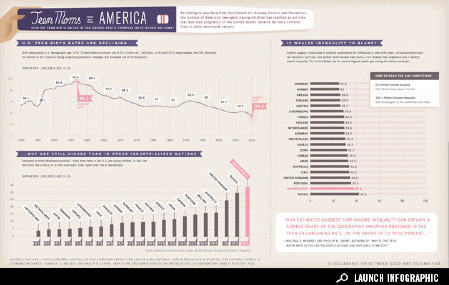Matt Yglesias writes in Slate that Mitt Romney’s Liberty University commencement address included a line about the correlation between education and family values, and economic prosperity. In his speech, Romney pointed out that “for those who graduate from high school, get a full-time job, and marry before they have their first child, the probability that they will be poor is 2 percent. But if [all] those things are absent, 76 percent will be poor.”
Yglesias writes:
“These are striking numbers, but they raise the age-old question of correlation and causation. Does this mean that the representative high-school dropout would be doing much better had he stuck it out in school for a few more years? Or is it instead the case that the population of high-school dropouts is disproportionately composed of people who have attributes that lead to low earnings?
When it comes to early pregnancy, surprising new evidence indicates that Romney and most everyone else have it backward: Having a baby early does not hamper a young woman’s economic prospects, as Romney implies. Rather, young women choose to become mothers because their economic outlook is so objectively bleak.” [Read more]
Economists Melissa Schettini Kearney and Phillip B. Levine write in their paper — “Why is the Teen Birth Rate in the United States so High and Why Does it Matter?” — that “the high rate of teen childbearing in the United States matters mostly because it is a marker of larger, underlying social problems,” having to do with the combination of being poor and living in an “unequal location” — states with higher rates of income inequality also have higher rates of teen pregnancy.
As Yglesias makes clear: “The upshot is that teen motherhood is much more a consequence of intense poverty than its cause.”
In this infographic produced by GOOD and Column Five, data from the Centers for Disease Control and The National Bureau of Economic Research, among others, indicates that although the U.S. teen pregnancy rate has declined dramatically over the past twenty years, it’s still higher than every other developed country (except Russia). Click on the graphic to zoom in on the data at GOOD‘s website.


